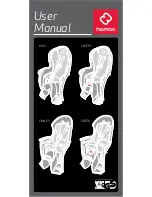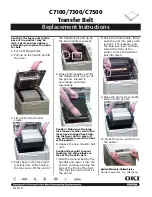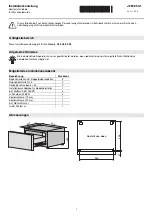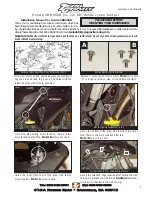
6
Eaton Power Xpert 9395 UPS Installation and Operation Manual 164201725—Rev 15
11..22..99
IInnhheerreenntt R
Reedduunnddaannccyy
To deliver greater reliability, the Power Xpert 9395 UPS can be configured by an authorized Eaton Customer
Service Engineer for inherent redundancy if a FI-UPM is installed. When configured, the UPS automatically
becomes redundant if the load is at or below the capacity of the UPMs minus the capacity of one UPM. Under
normal conditions the UPMs in the UPS share the load equally. If one or more UPMs becomes unavailable and
the load is at or below the capacity of remaining UPMs, the remaining UPMs supply the load instead of
transferring to bypass.
If the capacity of the UPMs falls below the redundancy level or the load increases above redundancy level, but
is still able to maintain the load, a loss of redundancy alarm is sounded. If the load exceeds the capacity of
remaining UPMs, the UPS transfers to bypass.
11..22..1100 EEnneerrggyy S
Saavveerr S
Syysstteem
m aanndd H
Hiigghh A
Alleerrtt M
Mooddeess
NOTE
Energy Saver System mode requires the UPS to be factory built with a Continuous Static
Switch (CSS).
NOTE
The Variable Module Management System and Energy Saver System modes are
mutually exclusive.
As a subset of Online mode, the Energy Saver System (ESS) mode maximizes efficiency by eliminating
unnecessary power conversion when the commercial power source is within acceptable voltage and frequency
limits. In this mode, the UPS is actively monitoring the critical bus and instantly and seamlessly transitions to
double-conversion mode (inverter online) if a commercial electrical power brownout, blackout, overvoltage,
undervoltage, or out–of–tolerance frequency condition occurs.
In High Alert mode the unit transfers from ESS mode to double-conversion mode or if in double-conversion
mode remains in double-conversion mode for a default time period of one hour. High Alert mode allows the
user to place the unit in double-conversion mode when outside conditions could cause a power disturbance. At
the completion of the time period, the unit defaults back to ESS mode. If the High Alert command is received
during the time period, the timer will be restarted.
11..22..1111 H
Haarrm
moonniicc R
Reedduuccttiioonn S
Syysstteem
m ((H
HR
RS
S))
The Harmonic Reduction system mode of the 9395 UPS allows the UPS to actively reduce the input Total
Demand Distortion (TDD) and increase the input power factor while maintaining high efficiency operation in
ESS mode. The UPS uses one of its UPMs to perform this active harmonic cancellation.
HRS mode uses an extra set of sensors (CTs) on the output bus of the unit. These sensors measure the
harmonics created by loads attached to the UPS output and the system actively reduces these harmonics.
NOTE
Total Demand Distortion as defined by IEEE 519-1992 is the total root-sum-square
harmonic current distortion, in percent, of the maximum demand load current (the
nameplate rating of a fully rated UPS).
The system must be in ESS mode to activate HRS mode. In HRS mode, the inverter is ON, the rectifier is OFF
and the output contactor is CLOSED.
HRS is a normal operating mode, not an alarm condition. The NORMAL light appears on the front of the UPS.
11..22..1122 V
Vaarriiaabbllee M
Moodduullee M
Maannaaggeem
meenntt S
Syysstteem
m aanndd H
Hiigghh A
Alleerrtt M
Mooddeess
NOTE
The Variable Module Management System and Energy Saver System modes are
mutually exclusive.
The Variable Module Management System (VMMS) mode maintains UPM redundancy and achieves higher
efficiencies by intelligently controlling the UPM–s load level. The efficiency rating for each UPM is highest
Summary of Contents for Power Xpert 9395
Page 8: ......
Page 269: ...16420172515 164201725 15 ...
















































